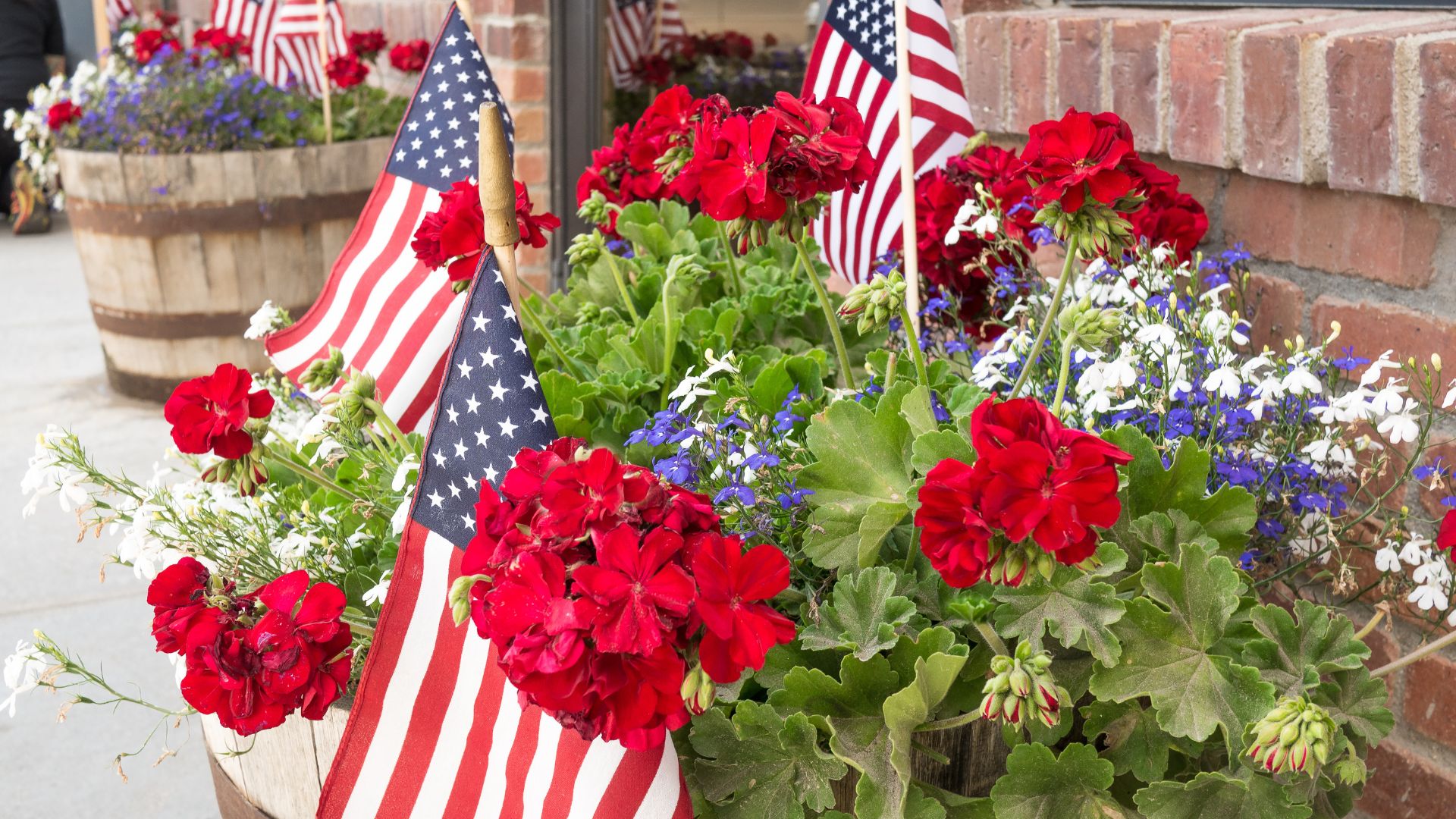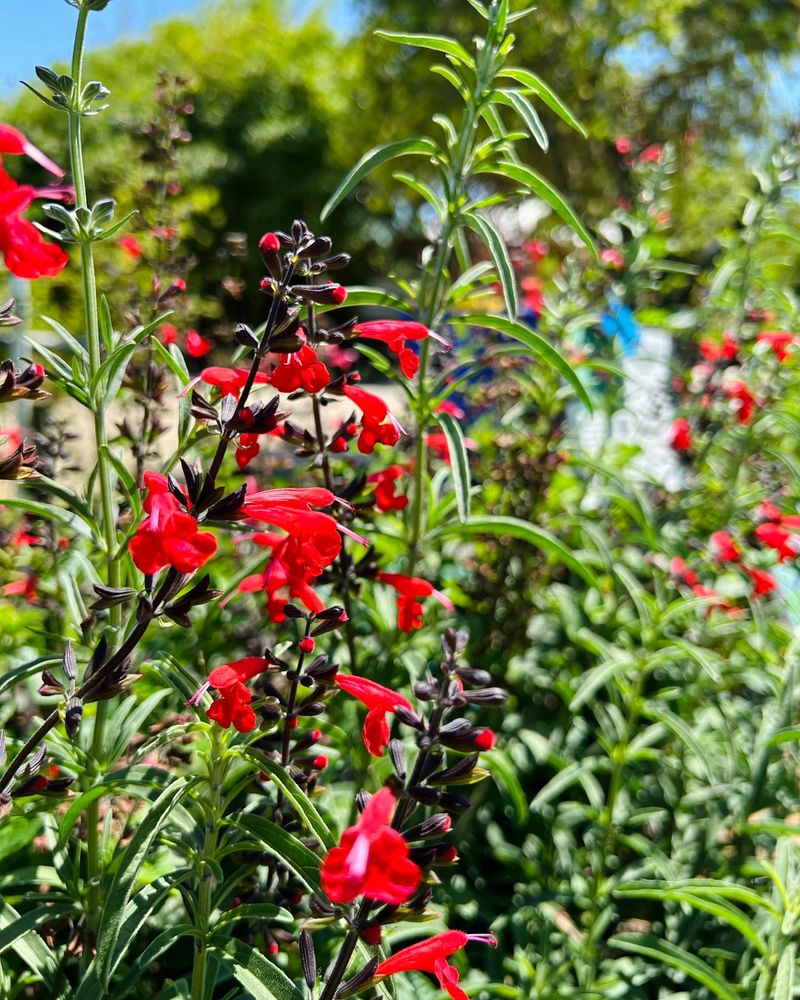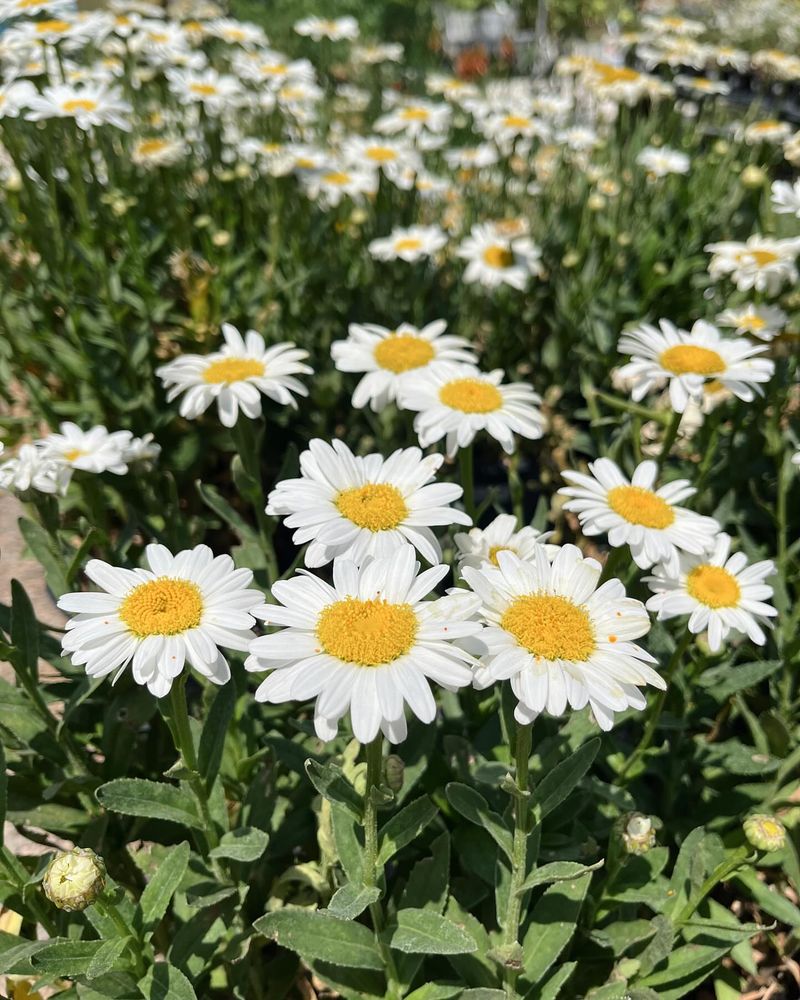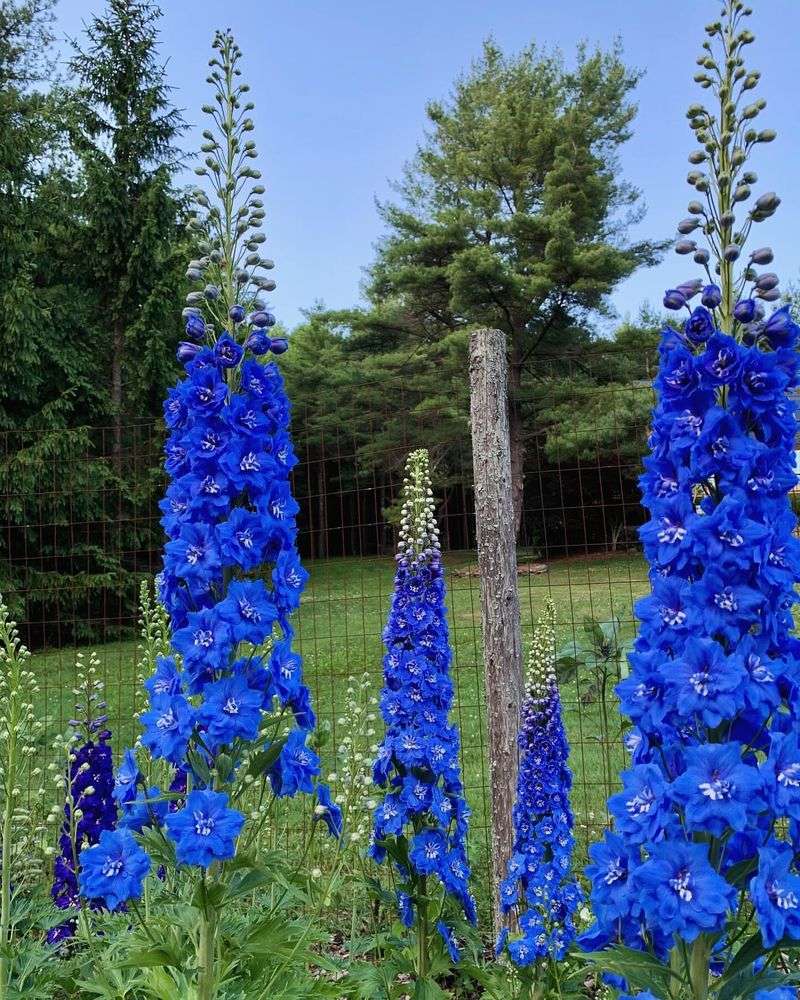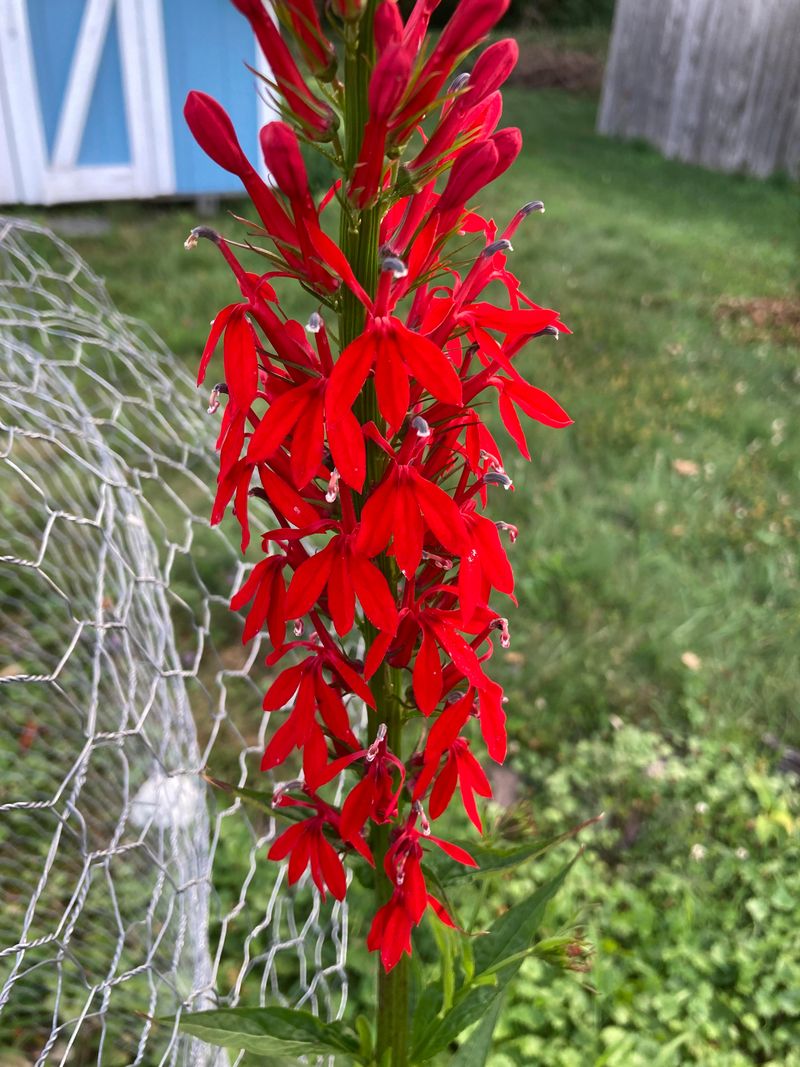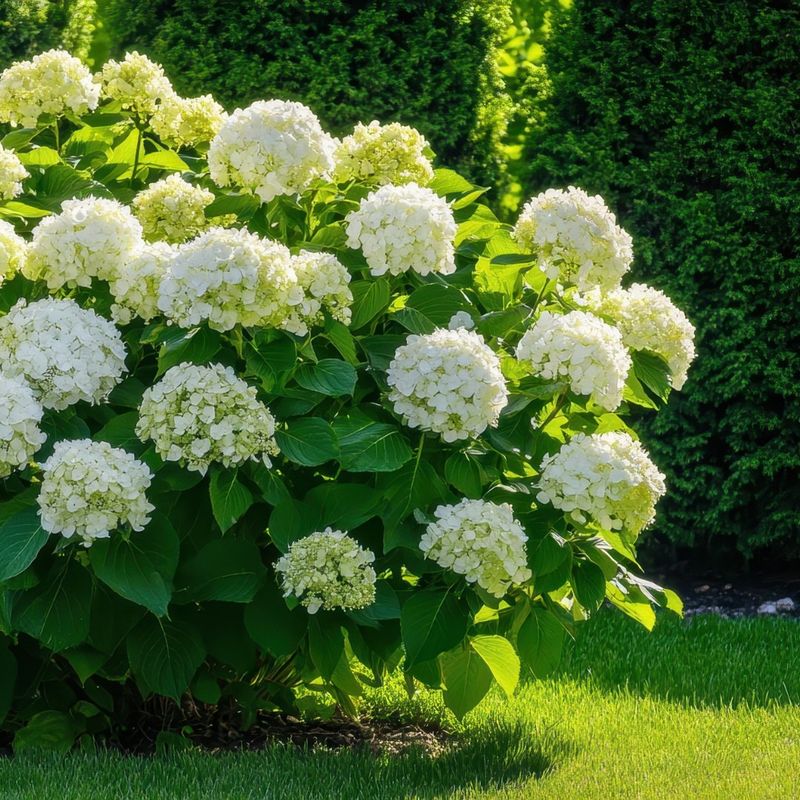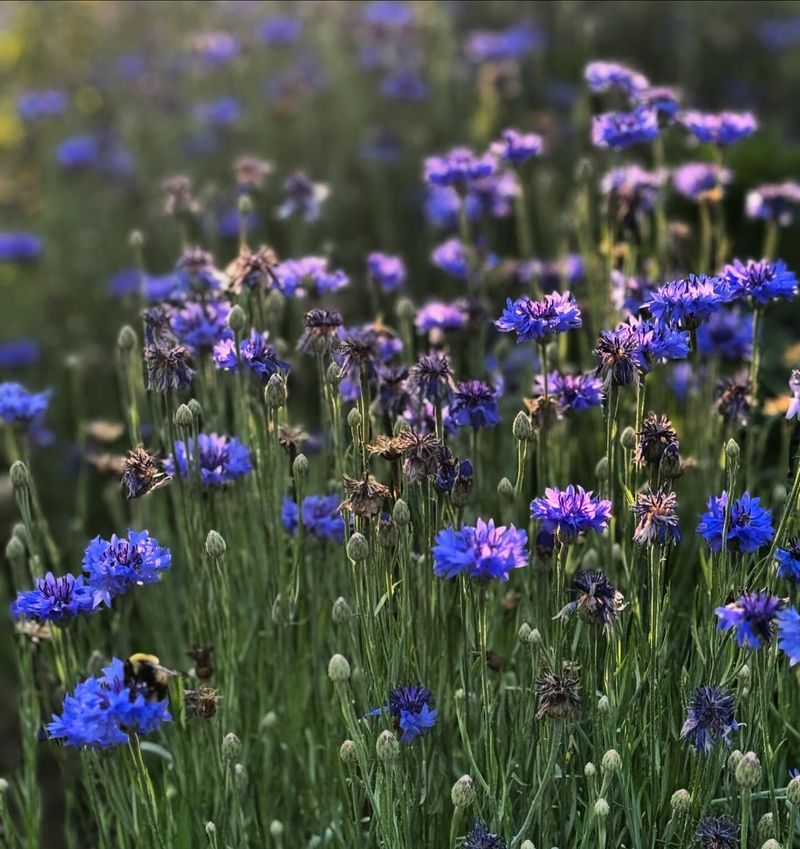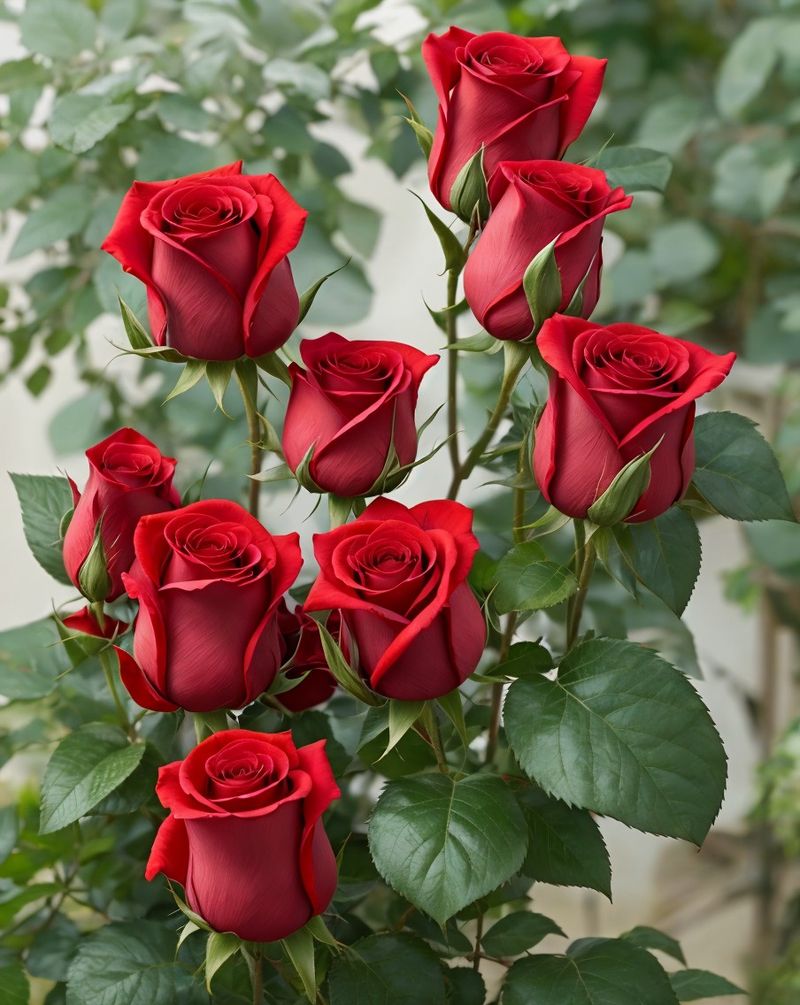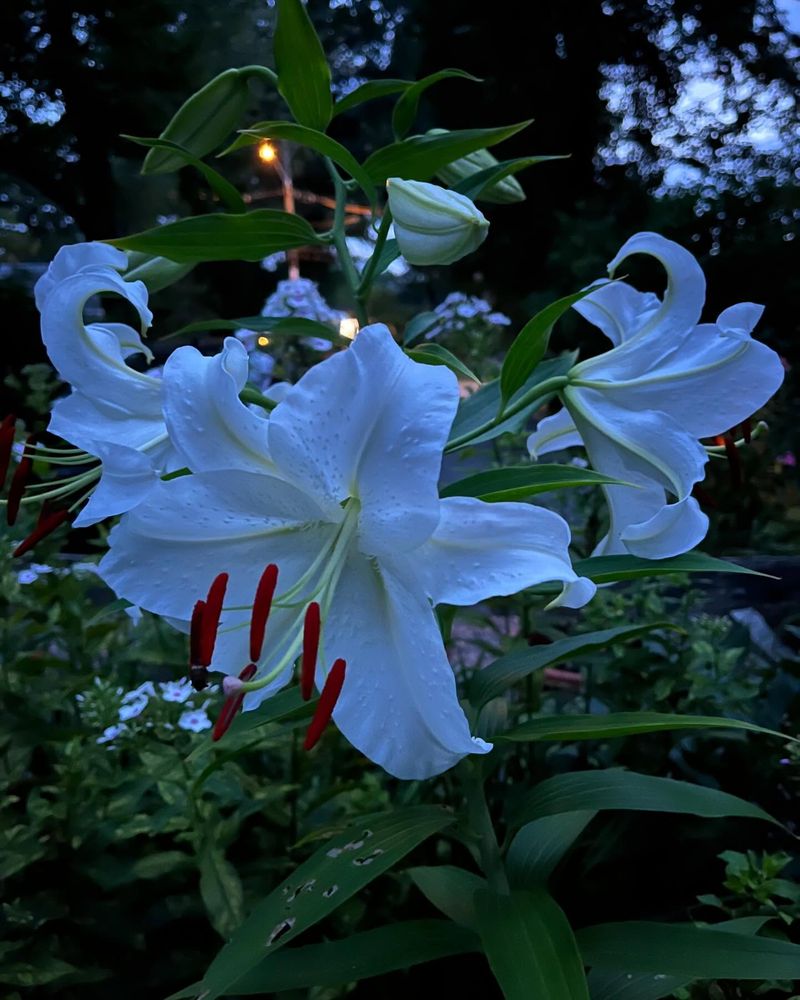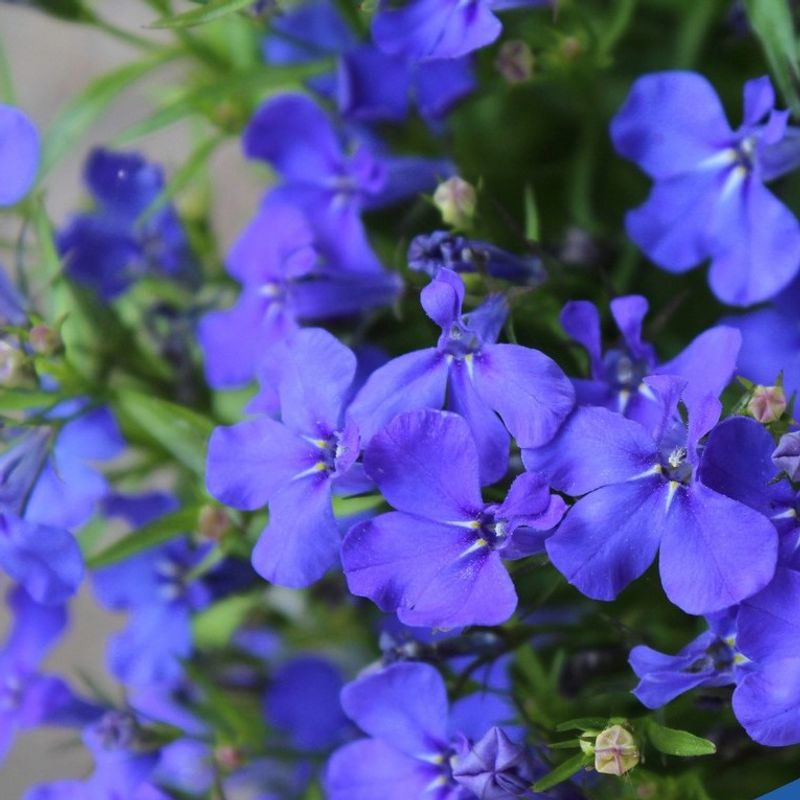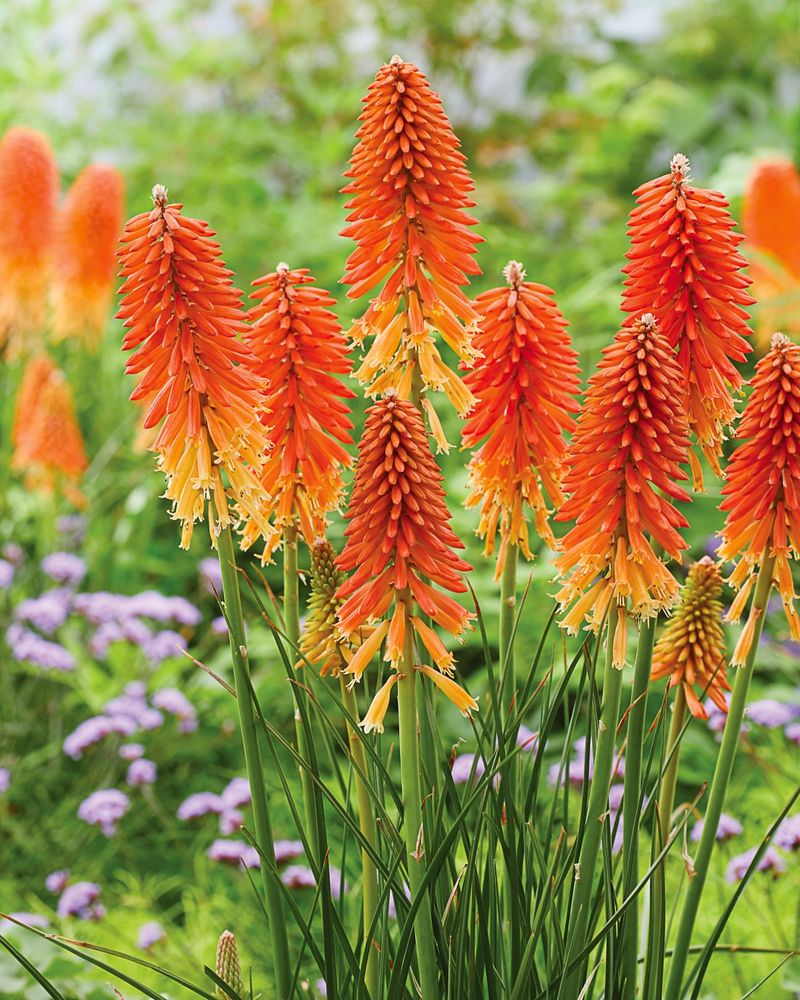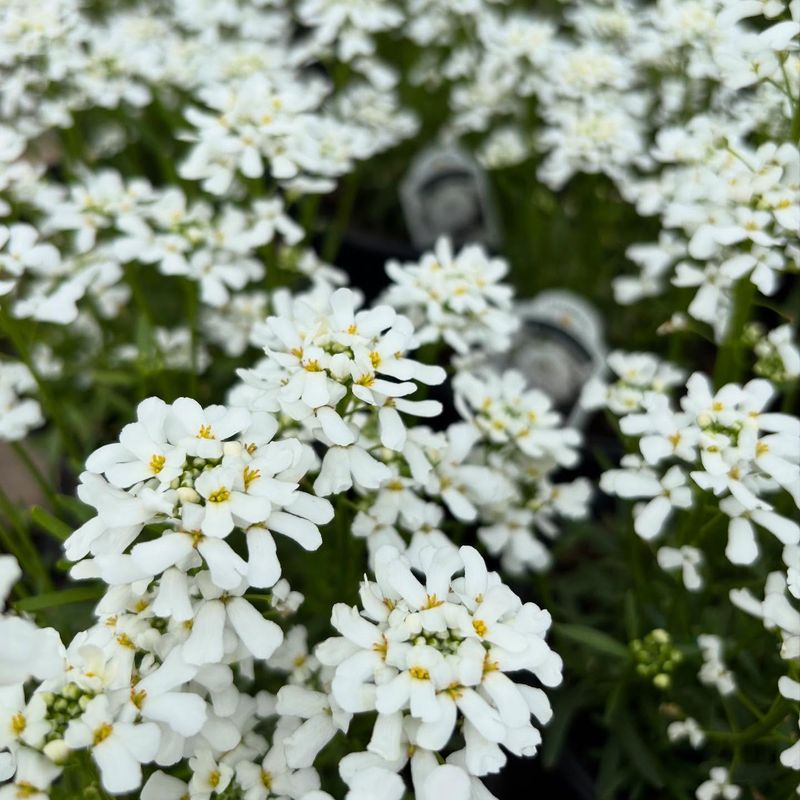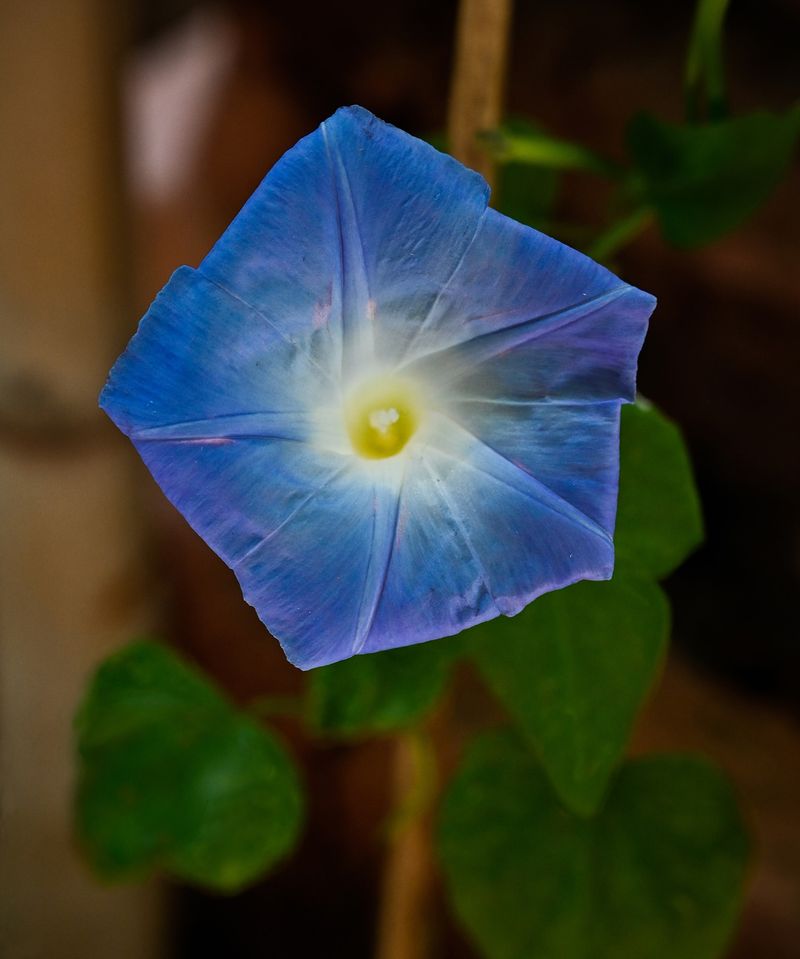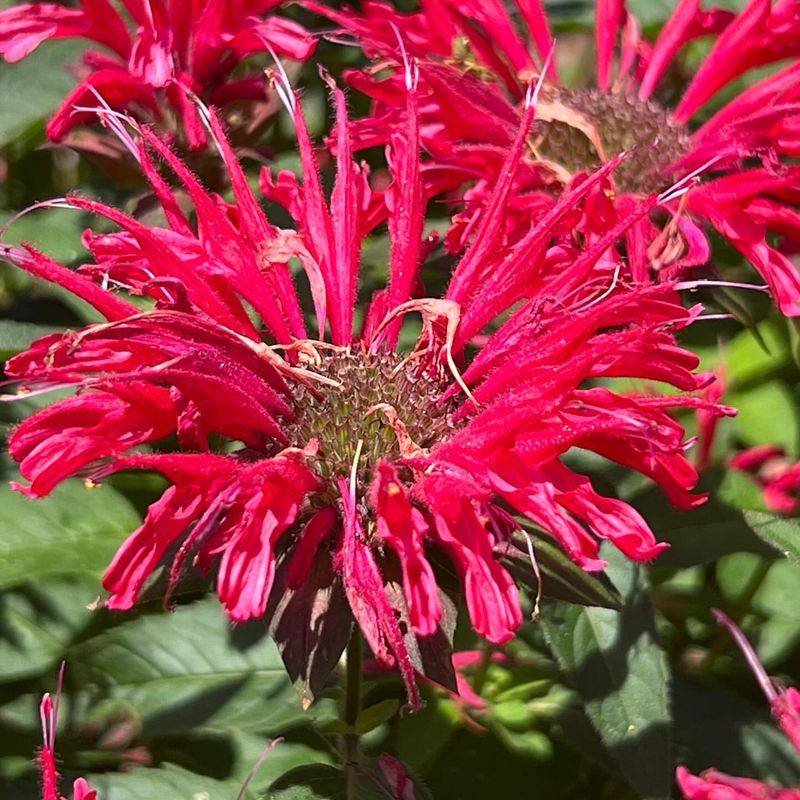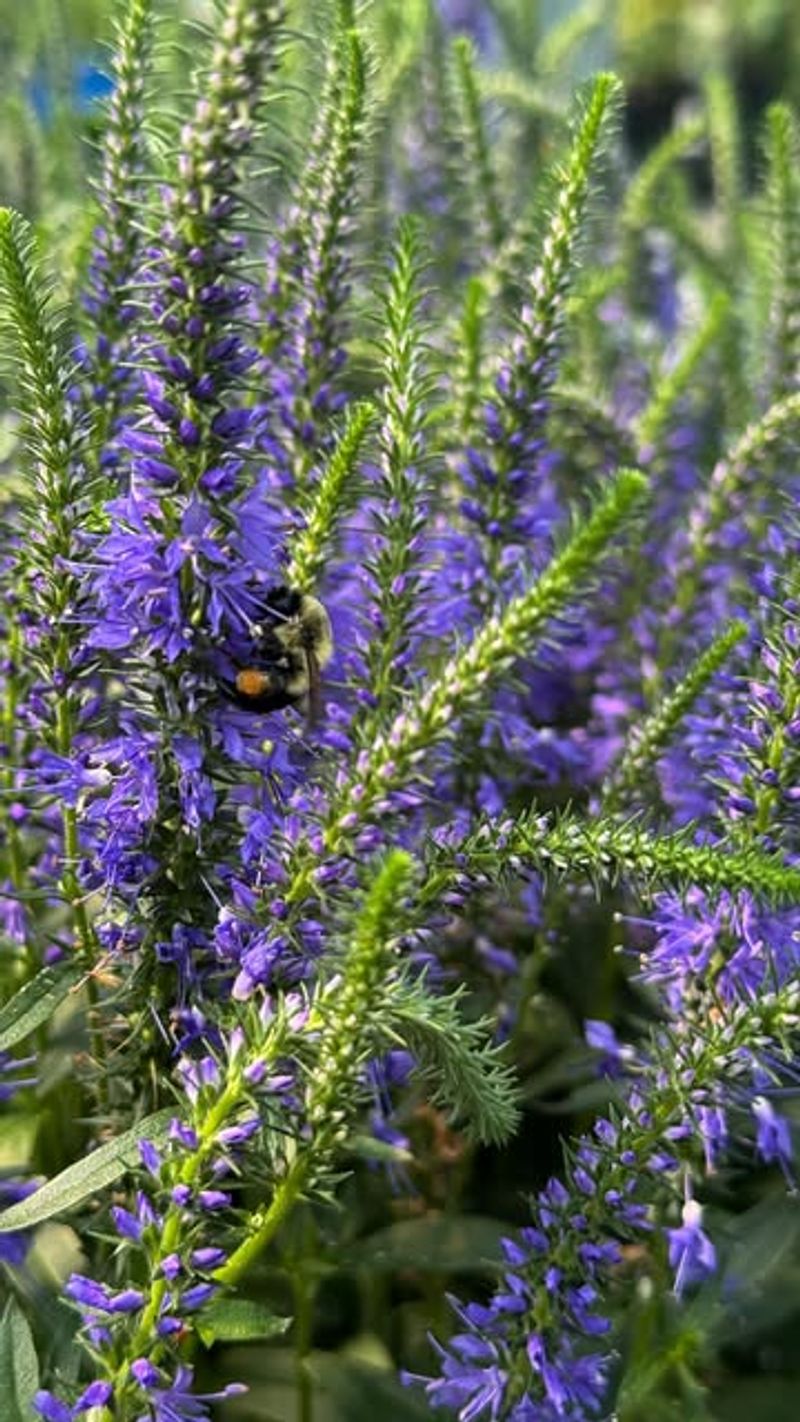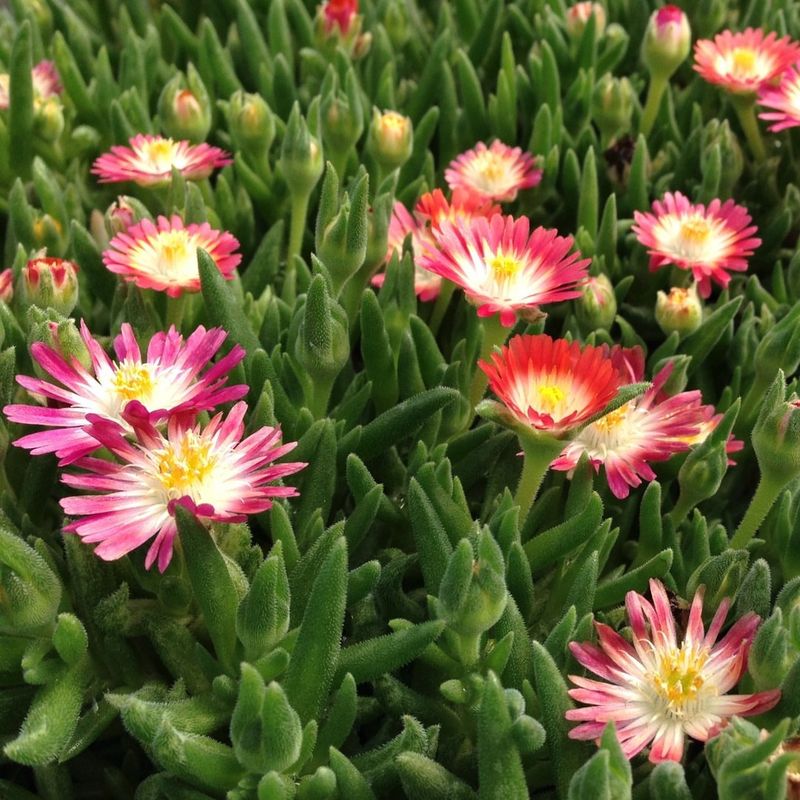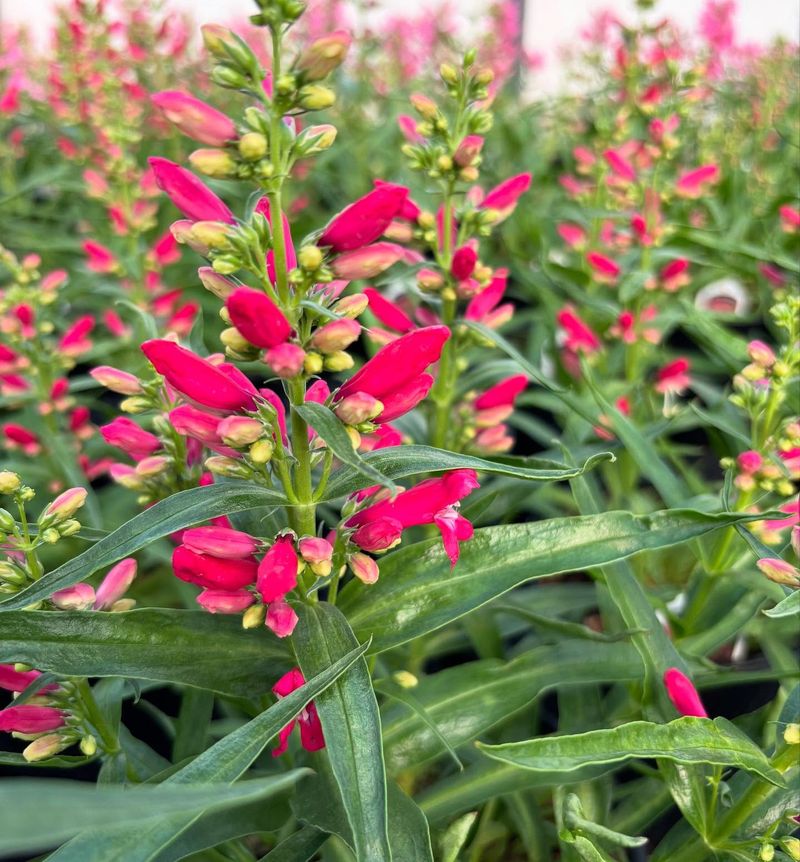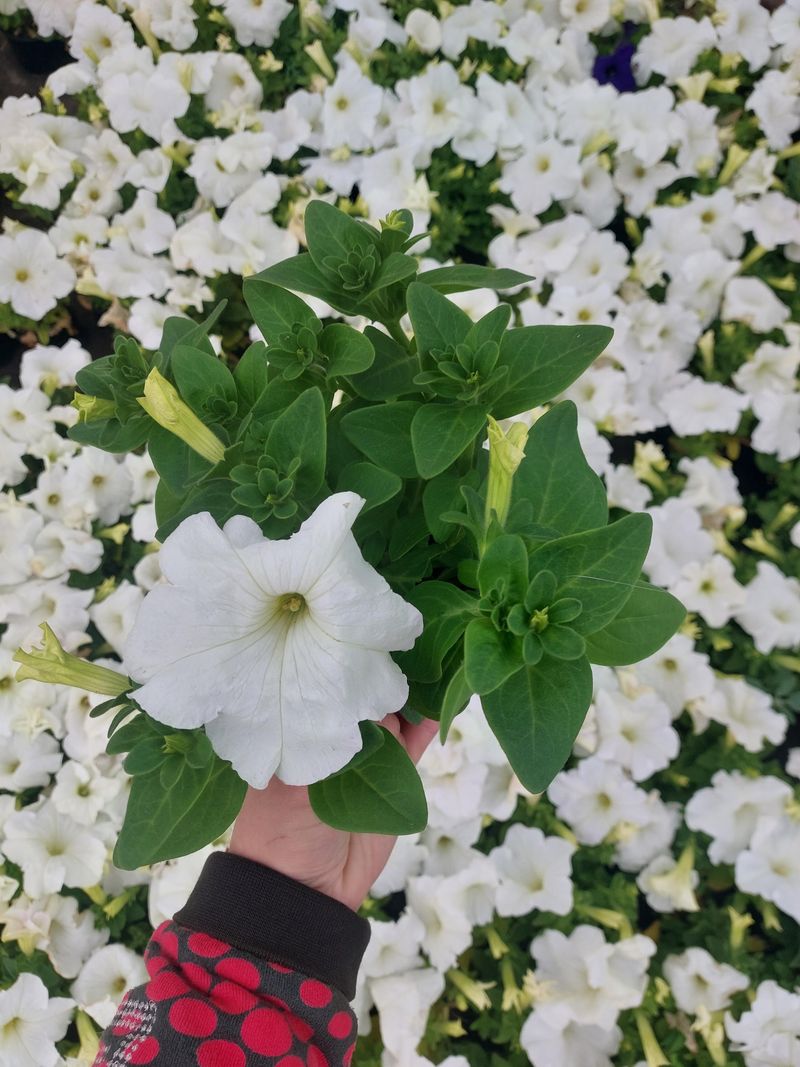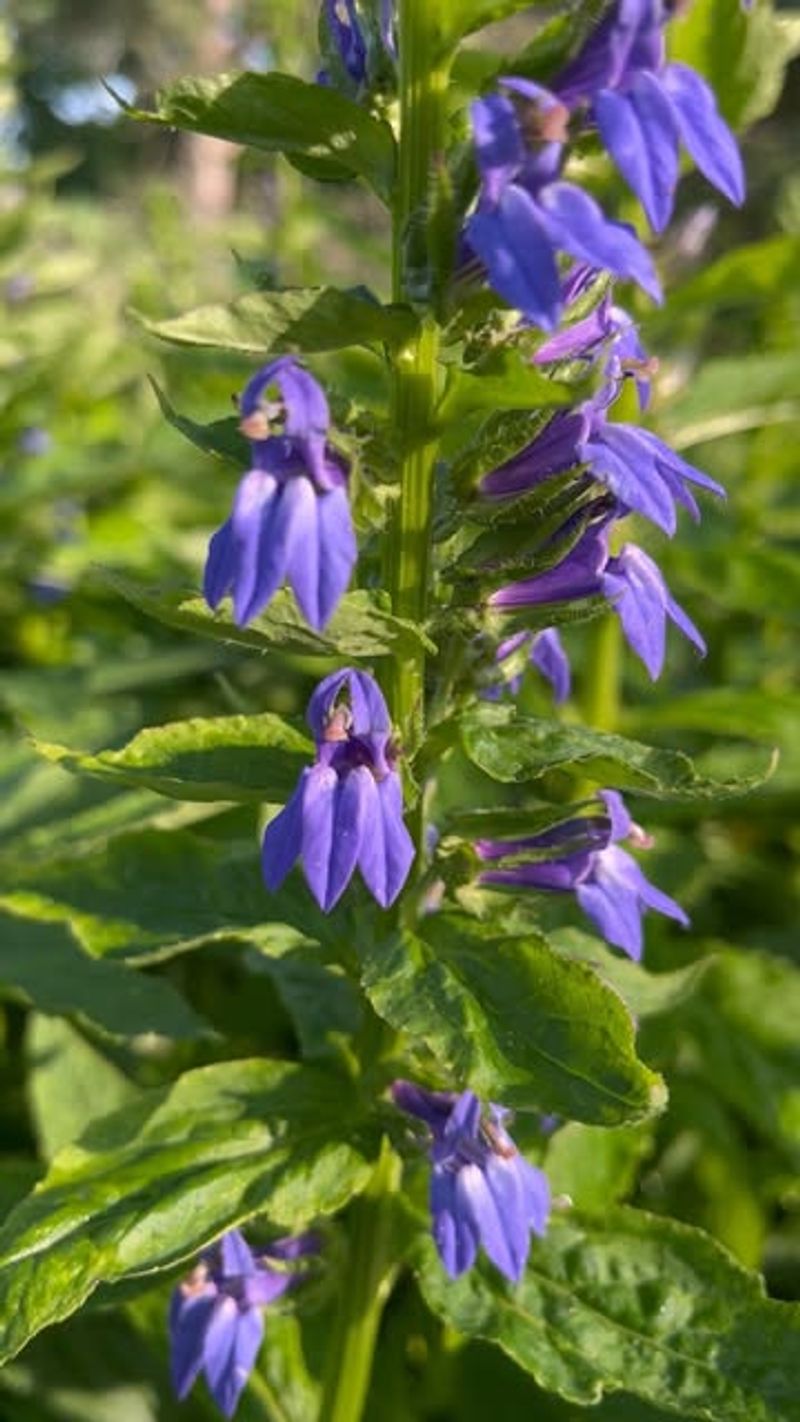Want to add a touch of patriotic flair to your garden this summer without going overboard with plastic décor? You’re in luck—Mother Nature has her own way of celebrating with stunning red, white, and blue blooms that often peak right around the Fourth of July.
I love mixing these colorful flowers into containers and beds near my porch—there’s something magical about watching them sway in the breeze while waiting for the fireworks to start. Some varieties are also pollinator magnets, which means your festive garden doubles as a feast for butterflies and bees. Plus, many of these blooms are easy to grow, even for beginners.
Whether you’re hosting a backyard barbecue or just enjoying a quiet summer evening with a glass of iced tea, these patriotic plants bring charm and color without any extra fuss. Let’s dig into some of the best options to help your garden sparkle in red, white, and blue.
1. Red Salvia
Gardeners adore these spiky crimson blooms that attract hummingbirds throughout summer. The upright flower stalks stand at attention like little soldiers in the sunshine.
Growing red salvia couldn’t be easier – they thrive in both containers and garden beds. I’ve found they perform remarkably well even during July heat waves when other flowers might struggle.
Plant them in full sun with well-drained soil, and they’ll reward you with continuous color from June through September. Their drought tolerance makes them ideal for busy homeowners who can’t water daily.
2. White Shasta Daisies
Nothing says summer quite like these classic white blooms with cheerful yellow centers. The crisp white petals seem to glow in evening light, creating a magical effect in any garden space.
My front border filled with Shasta daisies becomes a neighborhood talking point every July. They spread gradually over years, forming impressive clumps that provide plenty of cutting flowers.
Deadhead spent blooms regularly to encourage continuous flowering right through Independence Day celebrations. These hardy perennials return reliably year after year with minimal care, making them a smart investment for any garden.
3. Blue Delphinium
Reaching dramatically skyward, these tall spires of true blue flowers create vertical interest in any garden. Few plants achieve such a genuine blue color in the flower world.
Last summer, my delphiniums became the backdrop for family photos during our backyard barbecue. Their statuesque presence adds instant sophistication to casual garden settings.
Stake these beauties early as their hollow stems can snap in summer storms. Morning sun with afternoon shade helps them perform their best in most regions, especially where summers get hot. They prefer rich, moist soil with good drainage.
4. Cardinal Flower
Named after the bright red robes of Catholic cardinals, these native wildflowers produce intense scarlet blooms that hummingbirds simply cannot resist. The tubular flowers grow on upright stems reaching 2-4 feet tall.
Along my garden stream, cardinal flowers create dramatic reflections in the water. Their preference for moist conditions makes them perfect partners for water features or rain gardens.
Unlike many garden plants, they actually perform beautifully in partial shade, especially in hotter regions. Native plant enthusiasts appreciate how they support local pollinators while adding bold color to difficult wet spots where other flowers might rot.
5. Snowball Hydrangea
Round clusters of pristine white flowers resemble fluffy snowballs atop lush green foliage. These old-fashioned shrubs have charmed gardeners for generations with their reliable summer performance.
The massive flower heads make spectacular cut arrangements for holiday tables. My grandmother’s hydrangea bush always produced armloads of blooms just in time for summer gatherings.
Unlike their blue and pink cousins, these white varieties maintain their color regardless of soil pH. Morning sun with afternoon protection keeps the blooms looking fresh longer during hot July days. Consistent moisture produces the most impressive flower display.
6. Bachelor’s Button
Also known as cornflower, these feathery blue blooms dance on slender stems throughout early summer. Their true-blue color is increasingly rare in the flower world, making them especially valuable for patriotic displays.
Sowing seeds directly in the garden in early spring ensures flowers by Independence Day. Country gardens have featured these cheerful annuals for centuries – I scatter seeds each year for a casual, meadow-like effect.
Historically, young men wore these flowers in buttonholes when courting, hence their romantic name. They make long-lasting cut flowers and attract beneficial insects to vegetable gardens. Drought-tolerant once established, they need little fussing.
7. American Beauty Rose
Deep crimson petals unfurl from classic pointed buds, releasing an intoxicating fragrance that perfumes the entire garden. These iconic roses reach peak bloom just as summer festivities begin.
Heritage rose enthusiasts treasure these heirloom varieties for their connection to American gardening history. The velvety texture of each petal catches morning dew in a way that modern hybrid roses rarely match.
Despite their elegant appearance, these roses prove surprisingly tough once established. A sunny location with good air circulation helps prevent common rose problems. Mulching conserves moisture during July heat while suppressing weeds that compete for nutrients.
8. White Lily
Elegant trumpet-shaped blooms rise majestically above strappy foliage, filling evening air with sweet perfume. Their pristine petals seem to capture moonlight, glowing softly after sunset.
Easter lilies planted in gardens after holiday forcing often rebloom naturally in July. The timing couldn’t be better for Independence Day celebrations when their pure white flowers complement other patriotic plantings.
Deer typically avoid lilies due to their toxic nature, making them reliable performers even in rural gardens. Plant bulbs in fall for summer flowers, or purchase potted plants in bud for instant impact. Their stately presence elevates any garden design.
9. Blue Lobelia
Masses of tiny sapphire flowers create rivers of cool blue in summer gardens and containers. The intense color appears almost electric, especially when planted in generous drifts.
Annual varieties bloom continuously from June through September without deadheading. I’ve had great success using them as living mulch beneath taller plants where they suppress weeds while adding color.
Heat-tolerant varieties have been developed specifically for summer performance in warmer regions. Regular moisture keeps them flowering profusely even during July heat waves. Their compact growth habit makes them perfect for edging paths or filling hanging baskets.
10. Red Hot Poker
Torch-like flower spikes transition from fiery red to golden yellow, creating living flames in the midsummer garden. Their architectural form provides strong vertical elements that catch the eye from across the yard.
Hummingbirds battle for territory around these nectar-rich blooms in my garden each summer. The drought-tolerant nature of these South African natives makes them perfect for water-wise landscapes.
Sharp drainage prevents winter rot in colder regions where they’ve proven surprisingly hardy. Division every few years keeps clumps vigorous and flowering abundantly. Their exotic appearance belies their easy-care nature – they’re among the most forgiving perennials for beginners.
11. Candytuft
Clouds of pristine white flowers blanket this low-growing perennial in early summer. The name comes from Candia, the former name of Crete, rather than any candy connection.
Evergreen foliage provides year-round structure even after flowering finishes. My rock garden features several clumps that cascade over stone walls, softening hard edges with their flowing form.
Shearing plants lightly after spring’s main bloom often triggers a second flowering around Independence Day. Their drought tolerance once established makes them ideal for hot, dry spots where other perennials struggle. Butterflies find their nectar irresistible despite the simple flower form.
12. Morning Glory
Heavenly blue trumpets greet each day, climbing vigorously on whatever support they find. Few flowers achieve such a perfect sky-blue color that complements both red and white companions in patriotic plantings.
Starting seeds indoors six weeks before last frost ensures flowering by early July. The fast growth amazes first-time growers – I’ve measured vines growing nearly a foot weekly during summer heat.
Train them on strings, trellises or let them scramble through shrubs for natural support. Each bloom lasts just one day, but plants produce hundreds of flowers throughout summer. Morning sun exposure encourages the most abundant flowering display.
13. Bee Balm
Whorls of scarlet flowers resemble exploding fireworks atop aromatic foliage that deters garden pests naturally. Native to North America, this perennial has deep historical roots in both medicinal and ornamental gardens.
Pollinators flock to these nectar-rich blooms during July’s peak flowering time. The mint family connection becomes obvious when crushing a leaf – the spicy fragrance explains why colonial settlers used it for tea.
Mildew resistance varies between varieties, so choose modern cultivars for humid regions. Dividing clumps every few years maintains vigor and prevents center die-out. Their natural meadow habitat suggests they prefer consistent moisture but good drainage.
14. Veronica
Slender spikes of tiny blue flowers create vertical interest in perennial borders throughout midsummer. The long-lasting blooms attract beneficial insects while resisting damage from pests.
Commonly called speedwell, these reliable perennials return year after year with minimal care. After growing dozens of varieties, I’ve found ‘Georgia Blue’ offers the most consistent true-blue color for patriotic plantings.
Removing spent flowers extends the blooming season well into August. Drought tolerance improves with age as plants establish deep roots. Their tidy growth habit makes them suitable for formal gardens while their durability suits casual settings equally well.
15. Strawberry Ice Plant
Dazzling white daisy-like flowers cover succulent foliage like a dusting of summer snow. The low-growing habit makes them perfect for garden edges, rock gardens, or spilling from containers.
Handling summer heat with remarkable grace, these drought-resistant plants actually prefer poor soil. My south-facing slope stays colorful all summer long thanks to these undemanding ground covers.
Despite their delicate appearance, they’re surprisingly tough once established. The fleshy leaves store water for dry periods, explaining their resilience during July heat waves. Winter drainage is crucial in colder regions to prevent root rot during dormancy.
16. Ruby Glow Penstemon
Tubular ruby-red flowers dangle from upright stems, creating living wind chimes that sway with summer breezes. Hummingbirds perform aerial acrobatics around these nectar-rich blooms all day long.
Native to American prairies, these hardy perennials laugh at drought once established. The glossy, narrow leaves remain attractive even when not in flower, providing garden structure throughout the growing season.
Full sun locations produce the most abundant flowering display. After trying various mulches, I’ve found gravel works best for these plants that hate wet feet. Their western heritage makes them ideal for xeriscaping projects where water conservation matters.
17. White Petunia
Trumpet-shaped blooms cover these summer annuals with a blanket of pure white that glows in evening gardens. Modern varieties resist summer rains that would have spoiled their predecessors’ delicate petals.
Container plantings spill over edges in foamy cascades that soften hard landscape lines. The night fragrance adds another dimension to outdoor entertaining spaces during summer gatherings.
Weekly deadheading keeps plants looking fresh and encourages continuous blooming through Labor Day. A liquid fertilizer application every two weeks maintains vigor during the long flowering season. Heat tolerance varies between varieties – look for those specifically bred for summer performance.
18. Great Blue Lobelia
Unlike its more common red cousin, this native wildflower produces spikes of true blue flowers that thrive in partial shade. The deeper blue color separates it from the lighter annual lobelias used in containers.
Naturally found along woodland streams, these beauties appreciate consistent moisture during summer heat. The vertical growth habit provides important structure in shade gardens where many plants tend to sprawl.
Deer and rabbits typically avoid the bitter foliage, making these reliable performers even in rural gardens. Self-seeding occurs in happy plants but never becomes invasive. Native plant enthusiasts value their important ecological role supporting specialized pollinators.

